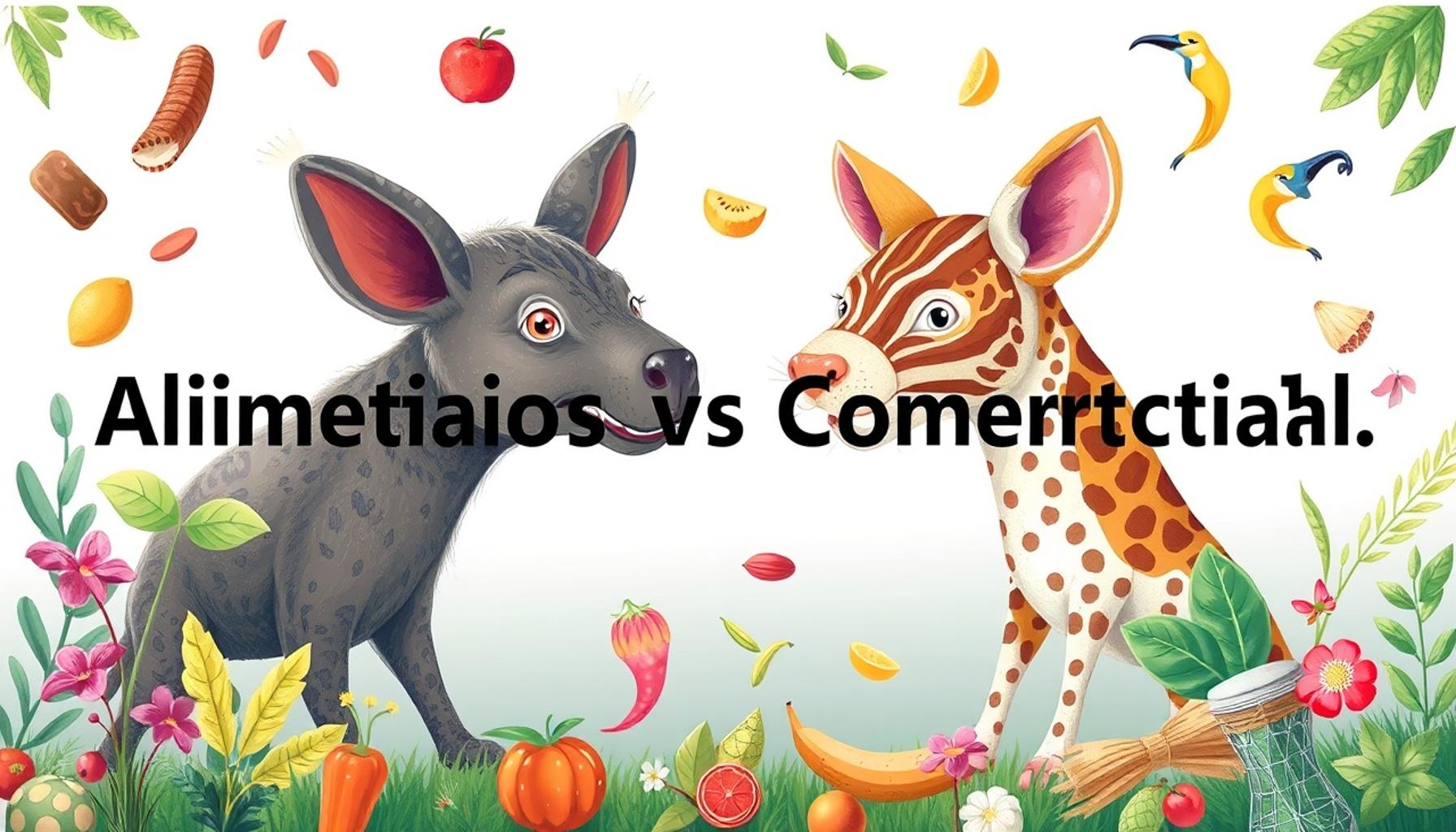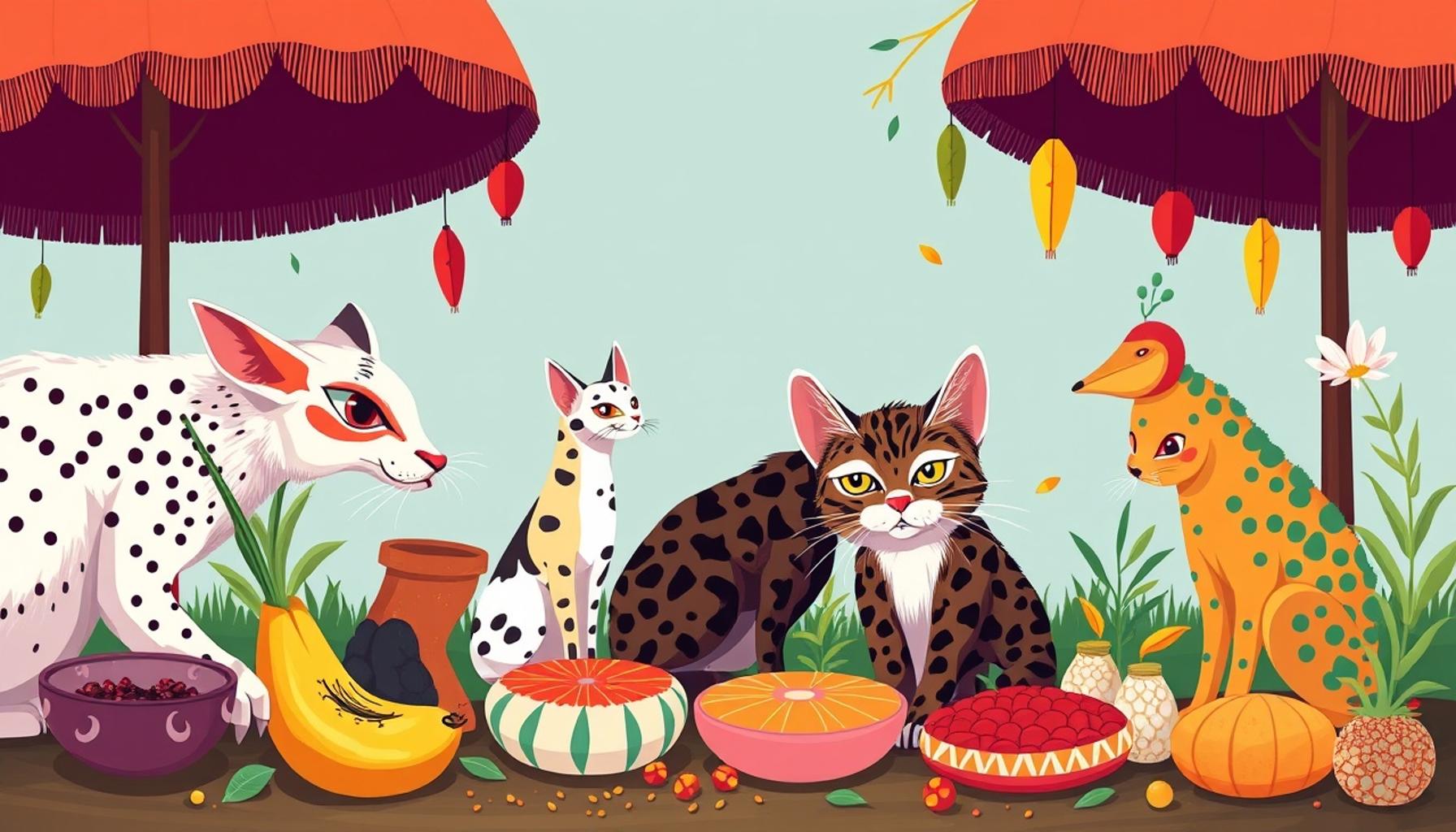Sustainable Practices in Pet Nutrition: How to Reduce Environmental Impact

Understanding Sustainable Pet Nutrition
As the global consciousness around environmental issues becomes more pronounced, pet owners in Nigeria are increasingly mindful of their pets’ diets and the potential impact those choices have on the planet. The decisions we make about pet food extend beyond our furry companions’ health; they resonate throughout the ecosystem. By embracing more sustainable practices, we can ensure that our pets thrive while also caring for the environment.
To foster a deeper understanding of sustainable pet nutrition, let’s explore several key aspects that pet owners should consider:
- Local Sourcing: Supporting local farmers by choosing pet food made from locally sourced ingredients not only benefits the community but also minimizes transportation emissions. For instance, in Nigeria, ingredients like cassava, yam, and vegetables can be sourced from nearby farms. This not only supports local economies but also guarantees fresher food for pets, thereby enhancing their nutritional intake.
- Plant-Based Options: With growing awareness of the environmental effects of meat production, many pet owners are exploring plant-based food options for their pets. Ingredients like lentils, beans, and peas are rich in protein and can mitigate the reliance on resource-intensive meat products. Incorporating such ingredients can contribute to a lower carbon footprint while still meeting a pet’s dietary needs.
- Minimal Packaging: The importance of reducing waste cannot be overstated. Opting for brands that prioritize eco-friendly or minimalistic packaging is crucial. For example, some Nigerian brands are now using biodegradable materials, making it easier for environmentally conscious pet owners to dispose of packaging responsibly. Supporting these brands helps foster a more sustainable market.
- Homemade Meals: Crafting homemade pet meals allows for greater control over the quality of ingredients consumed by pets. By utilizing local produce and proteins like fish or chicken from trusted sources, pet owners can create nutritious meals tailored to their pets while reducing food waste. Recipes using popular local ingredients are widely available, making this approach both practical and rewarding.
By understanding and implementing these sustainable practices, pet owners can ensure the health of their pets while positively impacting the environment. Nigeria’s rich agricultural landscape provides a plethora of sustainable ingredients, offering pet owners the opportunity to create nourishing meals that reflect local culture and cuisine.
Moreover, diving deeper into the world of sustainable pet nutrition reveals a wealth of benefits that extend beyond personal choices. Each small change in diet can significantly diminish your pet’s ecological footprint. For instance, by reducing meat consumption in a single pet’s diet, the collective impact across thousands of households can lead to a substantial reduction in carbon emissions and resource depletion.
Join the movement toward sustainable pet nutrition today; take measures that not only benefit our furry friends but also honor and protect the environment we all share.

YOU MAY ALSO LIKE: Read read another article
Adopting Sustainable Ingredients in Pet Food
One of the most impactful ways for pet owners to embrace sustainable practices is by thoughtfully selecting the ingredients that feature in their pets’ meals. The food choices we make can significantly influence the environmental outcomes associated with pet care. Certain ingredients are not only nourishing for our pets but also have a reduced environmental footprint.
Animal Protein Sourcing: Traditional pet food often relies heavily on animal protein, which is known for its high resource intensity. In Nigeria, the livestock industry is a significant contributor to greenhouse gas emissions and resource depletion. However, opting for responsibly sourced animal proteins can help mitigate these effects. For example, fish sourced from sustainable fisheries or local poultry from small farms can provide necessary nutrients without the excessive environmental burden. When pet owners opt for meats that are free-range or grass-fed, they are often supporting farms that follow better environmental practices.
Understanding the Protein Puzzle: Protein is a crucial component of a pet’s diet, but not all proteins are created equal. While cats and dogs are traditionally carnivorous, integrating alternative protein sources can be beneficial. Many innovative pet food manufacturers have begun to incorporate insect proteins, which are high in nutrients and require far less land and water to produce than conventional livestock. This emerging trend in sustainable pet nutrition is gaining traction. Moreover, locally sourced pulses and grains, like beans and millet, can supplement protein needs effectively without overstretching the environment.
Examining Nutritional Density
In sustainable pet nutrition, it is essential not just to consider the source but also the nutritional density of ingredients. Choosing nutrient-rich formulations ensures that pets receive maximum benefits from their meals, potentially reducing the need for excessive feeding, which can lead to food waste. Here are some pivotal factors to consider:
- Whole Food Ingredients: Pet foods that emphasize whole ingredients—such as fresh vegetables, fruits, and whole grains—favor environmental sustainability. These foods often come from diverse agricultural ecosystems and are less processed, leading to lower energy consumption during production.
- Seasonal Ingredients: Using seasonal ingredients not only supports local agriculture but also reduces transport emissions that contribute to carbon footprints. In Nigeria, seasonal produce such as okra, pumpkin, and leafy greens are excellent additions to homemade meals for pets.
- Organic Options: Choosing organic ingredients can potentially lead to less pollution in water and soil, thereby having a positive ripple effect on the ecosystem. Organic farming practices typically do not involve the use of chemical fertilizers or pesticides, making these ingredients more environmentally friendly.
As pet owners learn about various sustainable ingredients, they begin to understand the broader impacts of their dietary choices. Each decision to incorporate local or sustainable ingredients can create a ripple effect, encouraging more environmentally responsible practices throughout the pet food industry. By examining the sourcing and nutritional density of pet food, we not only improve the health of our pets but also contribute meaningfully towards a healthier planet. Engaging in sustainable pet nutrition not only benefits our cherished companions but also echoes a commitment to preserving the environment for future generations.
| Advantages | Details |
|---|---|
| Reduced Carbon Footprint | Emphasizing plant-based diets for pets can dramatically reduce the overall carbon emissions associated with meat production. |
| Sustainable Sourcing | Using ingredients from ethical suppliers ensures that resources are managed and replenished responsibly. |
| Waste Reduction | Implementing recycling programs for pet food packaging minimizes waste and supports circular economy principles. |
| Healthier Options | Sustainable diets not only benefit the environment but often provide nutritionally balanced options for pets. |
As the pet industry evolves, pet owners are becoming increasingly aware of their choices’ environmental implications. Adopting sustainable practices in pet nutrition isn’t just about improving our pets’ health but also about making conscious choices that benefit the planet. By switching to environmentally friendly options, pet owners not only contribute to a sustainable ecosystem but also raise awareness among fellow pet lovers. For instance, exploring meal options that replace traditional meat with alternatives, such as insects or lab-grown proteins, can lead to significant reductions in resource usage and greenhouse gas emissions. Furthermore, the push towards local sourcing encourages communities to support their farmers and businesses, paving the way for a more sustainable relationship between consumers and producers. Each decision at the pet food aisle can be a small yet impactful step toward reducing one’s environmental footprint.
YOU MAY ALSO LIKE: Read read another article
Reducing Food Waste in Pet Nutrition
Another vital component of embracing sustainable practices in pet nutrition is actively working to minimize food waste. Every year, a significant portion of pet food goes uneaten, contributing to a larger environmental impact. Awareness of how to manage and reduce food waste can make a profound difference for both pets and the planet.
Smart Feeding Strategies
Adopting thoughtful feeding strategies can greatly limit leftover food, which often ends up in landfills. Here are key approaches to consider:
- Portion Control: Understanding your pet’s dietary needs is essential for avoiding overfeeding. Pet owners should consult veterinarians to determine the appropriate amount of food based on their pet’s age, weight, and activity level. Using measuring cups or scales can help ensure precise portions, reducing the likelihood of uneaten food.
- Temperature and Storage: Proper food storage can enhance the shelf life of pet food, preventing spoilage. Keeping dry food in airtight containers and refrigerating wet food can withstand longer and decrease waste.
- Creative Recipes: Transforming leftover pet food into new meals or treats can be a fun and economical solution. For instance, lightly mixing unconsumed kibble with water can rehydrate the food, making it more appealing for pets that might be reluctant to eat. Additionally, pet owners can craft homemade treats using expired food so long as they are safe for consumption.
By implementing these strategies, pet owners can not only keep their pets nourished but also contribute to the reduction of food waste in their homes. This small shift in daily habits can yield significant environmental benefits.
Educating on Sustainable Options
Another crucial step in reducing environmental impact is for pet owners to seek out and educate themselves about sustainably produced pet food options available in Nigeria. In recent years, the growing demand for sustainably sourced pet products has led to an increase in local businesses offering eco-friendly solutions. By actively seeking out brands focused on sustainable practices, pet owners can support local economies while ensuring their pets receive quality nutrition.
Furthermore, knowledge sharing amongst pet owners can enhance community awareness surrounding sustainable pet nutrition. Organizing workshops, community groups, or online forums where individuals can discuss sustainable pet food sources fosters an informed community where sustainability thrives. Just bringing together pet owners to discuss where to find lead less environmentally impactful brands can drive local change.
Understanding the Lifecycle of Pet Food
Lastly, understanding the lifecycle of pet food is paramount in making informed decisions. Knowing how a product is sourced, produced, and transported can shed light on its overall environmental impact. For instance:
- Farm to Bowl: Transparency in sourcing is critical. Integrated supply chains that prioritize local and sustainable practices can mitigate greenhouse gas emissions associated with transportation. For example, connecting with local farmers and producers of pet food ingredients can contribute to a shorter supply chain and create a stronger demand for environmentally responsible practices.
- Recyclable Packaging: The sustainability of pet food packaging should also be a consideration. Selecting brands that use biodegradable or recyclable materials for their packaging can significantly lessen landfill contributions. In Nigeria, companies are beginning to adopt eco-friendly packaging alternatives, and pet owners should consider these brands when making purchases.
By learning more about the lifecycle of pet food and the potential impacts of their purchases, pet owners can advocate for greener practices throughout the pet food industry. A focus on innovative packaging and supply chain transparency enhances the opportunities for creating a more sustainable pet nutrition landscape. It brings to light the importance of holding manufacturers accountable to their environmental commitments.
SEE ALSO: Click here to read another article
Conclusion
In conclusion, embracing sustainable practices in pet nutrition is not only a responsible choice but also a necessary step toward mitigating environmental impact. By prioritizing local sourcing, utilizing eco-friendly packaging, and minimizing food waste through smart feeding strategies, pet owners can play a pivotal role in fostering a greener future. The ripple effect of these actions can contribute to a more sustainable pet food industry and solidify community connections centered around environmental stewardship.
With the burgeoning interest in sustainably produced pet food options in Nigeria, consumers have the power to drive demand for responsible brands, ultimately supporting the local economy while ensuring the well-being of their pets. Beyond purchasing decisions, educating fellow pet owners and exchanging ideas about sustainable nutrition can critically enhance community awareness. Platforms for discussion can breed innovation and change, as shared knowledge on effective practices encourages others to adopt similar habits.
The need for transparency in the pet food supply chain cannot be overstated. By understanding the full lifecycle of pet food, from farm to bowl, individuals can make informed choices that reinforce accountability among manufacturers. Ultimately, as more pet owners embrace these sustainable practices, the collective impact will lead to a healthier environment and a better quality of life for our beloved pets. Join the movement toward sustainability and be a part of the solution that reduces environmental impact—one meal at a time.



